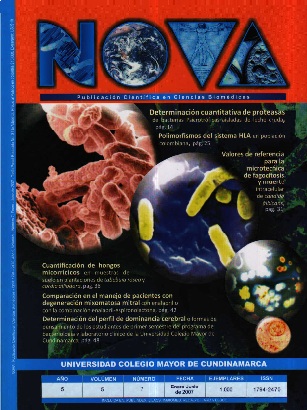Children exposed to drugs in a prenatal way are a medical and social problem. A useful way to study this problem is by analyzing biological matrices, such as the meconium, which stores psychoactive substances or their metabolites. To determine its fetal exposure the most common system is the analysis of blood from the umbilical cord, urine from the mother, or urine from the new born. Meconium is inert and it is easily obtainable. It stores psychoactive substances or its metabolites from week 12 of gestation and they are fossilized in it until birth. It can be a very important instrument to investigate fetal exposure to several drugs of abuse. It is necessary to know the degree of fetal exposure to contribute to the prognosis and timely pathology treatment which, due to the lack of clinical relevant manifestations, can be overlooked and require the implementation of tests that use reliable biological matrices.
keywords:
cocaine, etanol, fetal growth retardation fetal alcohol syndrome, marijuana, meconium, neonatal abstinence syndrome.









